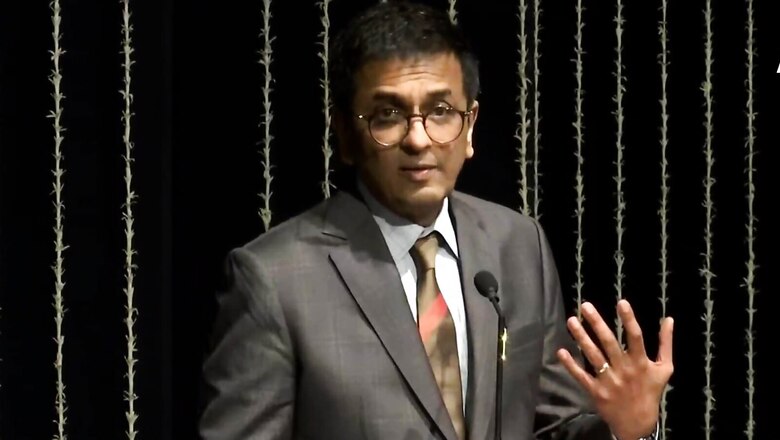
views
In yet another step to move towards a more tech-friendly and accessible judiciary, the Supreme Court on Tuesday began a pilot project to transcribe the proceedings of the Constitution Bench.
Announcing the new move, Chief Justice of India DY Chandrachud said, “Do you see the screen? We’re just trying to explore the possibilities of live transcript.
“With this, we will have a permanent record of arguments,” he said. The Supreme Court is using the technology based on artificial intelligence (AI) and natural language processing.
Justice PS Narasimha, who was on the bench with CJI Chandrachud and Justice JB Pardiwala, said the move would make the top court “truly a court of record”.
CJI Chandrachud, who has been heading the e-Committee of the Supreme Court even before becoming the master of roster, has time and again emphasised on the need of technology to make justice more accessible.
“Technology has become a powerful tool in the legal system, improving efficiency, accessibility and accuracy in the administration of justice,” CJI Chandrachud had said at an event earlier.
“The judiciary has the unenviable task of delivering justice in a period of both challenges and ground-breaking opportunities. The IT revolution constitutes a resource which has changed the way we work together and envisage the justice delivery mechanism,” the CJI had said further.
He had also said technological innovation by the judicial system should be designed to meet the needs of all its users, judges, court staff, lawyers, self-represented litigants, community leaders, researchers and the public at large.
Even in this year’s Union Budget, finance minister Nirmala Sitharaman allocated Rs 7,000 crore to the third phase of the eCourts projects.
This is a major thrust for a tech-powered future for the Indian judiciary, which is already undergoing a move to a virtual justice system spurred by the Covid-induced lockdown.
A major part of this prestigious e-courts project aims at the use of artificial intelligence and machine learning, which will allow for data analysis to work towards reduction in pendency and understanding litigation patterns, forecasting future needs and so on.
The Supreme Court discovered all things tech in 2022 as the year began in a strong grip of Covid-19, affecting the functioning of court. The Supreme Court 2.0 mobile application, RTI portal among others entered its domain even though physical hearings began again but the court continued to use its new tech tools as it functioned in the hybrid mode.
Read all the Latest India News here

















Comments
0 comment